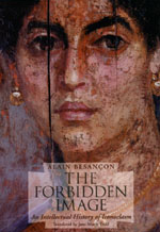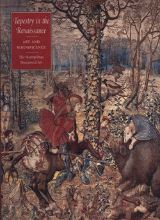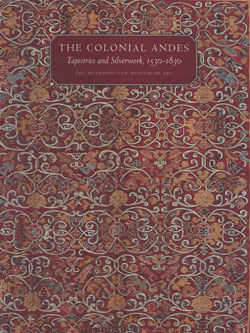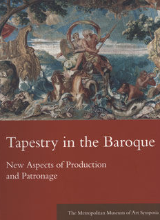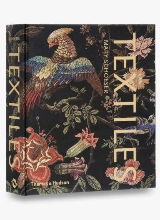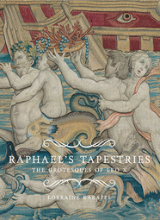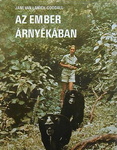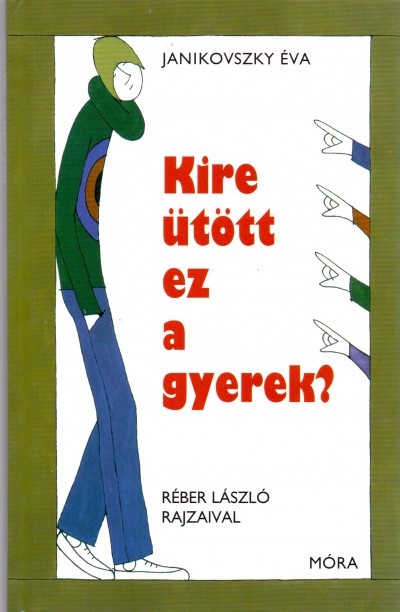Könyvajánlók
The forbidden image : an intellectual history of iconoclasm
Alain Besançon
Philosophers and theologians have long engaged in intense debate and introspection over the representation of the deity, its possibilities and its proscriptions. The Forbidden Image traces the dual strains of “iconophilia” and iconoclasm, the privileging and prohibition of religious images, over a span of two and a half millennia in the West...
tovább >>>
William Morris : 1834-1896 : a life of art
Charlotte & Peter Fiell
William Morris (1834–1896) was one of the greatest creative figures of the 19th century. As a visionary designer, as well as a manufacturer, writer, artist, and socialist activist, he pioneered the Arts and Crafts movement of the Victorian era, and left an extraordinary influence on architecture, textile, and interior design...
tovább >>>
Tapestry in the Renaissance : art and magnificence
Campbell, Thomas P.
Tapestries were a principal aspect of the ostentatious "magnificence" used during the Renaissance by powerful religious and secular rulers to broadcast their wealth and their might. This sumptuously illustrated book presents the first major survey of tapestry production between 1460 and 1560, and it catalogues the first monographic loan exhibition of tapestries in the United States in twenty-five years. It highlights the finest tapestry cycles of the age as one of the greatest achievements of Renaissance art. Examples from many of the most important surviving set—which still dazzle today as they did five hundred years ago in the palaces and cathedrals of Europe—illustrate the contribution that the medium made to the art, liturgy, and propaganda of the time...
tovább >>>
The colonial Andes : tapestries and silverwork, 1530-1830
When the Spanish landed on the coast of what is today Peru in 1532, they encountered the socially complex, artistically vibrant Inca Empire, whose vast, geographically diverse domain encompassed almost the entire length of the rugged Andes. Inca master weavers and metalsmiths, building on thousands of years of local artisanal mastery, had created a spectacular body of imperial art whose bold, mostly geometric designs were powerful expressions of Inca identity and sovereignty. Within one generation that culture had been forever transformed by the establishment of the viceroyalty of Peru. The remarkable exchange of cultures that ensued brought Europe and the New World together through a vibrant trade in goods, services, and ideas, creating a unique society that was richer and far more intriguing than the mere sum of its influences...
tovább >>>
Tapestry in the Baroque : new aspects of production and patronage
The exhibition "Tapestry in the Baroque: Threads of Splendor," which opened at the Metropolitan Museum in 2007, was the occasion for a symposium at which renowned tapestry scholars presented results of some of their important, highly detailed research. This volume publishes the papers in well-illustrated articles...
tovább >>>
Textiles : the art of mankind : with 1058 illustrations in color
Mary Schoeser
Textiles are the most ubiquitous, diverse and consistently creative art form on earth. This book ceelbrates like no other on the subject their spectacular and enduring appeal. Mary Schoeser marshals knowledge gleaned from a lifetime’s immersion in the textile arts to present a sweeping survey of the role textiles have played throughout all of human civlization. Over a thousand historical and contemporary images and highly informed texts illustrate the huge variety of materials, as well as their possible manipulations and surface treatments. Detailed descriptions include histories of pirvate collections and underscore the importance of context for appreciating the exquisite detail of fabric and cloth, with emphasis on geometric, abstract, natural and pictorial imagery...
tovább >>>
Raphael's tapestries : the grotesques of Leo X
Lorraine Karafel
Around 1515, Raphael (1483-1520) designed a set of tapestries for Leo X, the first Medici pope. Each was sumptuously woven in gold, silver, and silk, and depicted scenes from classical mythology with inventive grotesques. Now lost, these spectacular, grand-scale textiles are reconstructed in Raphael’s Tapestries and set among a series of unprecedented decorative projects that Pope Leo commissioned from the artist. Likely produced by the Brussels weaver Pieter van Aelst, the tapestries pioneered a new all’antica style analogous with contemporary painted and sculpted interior programs. Tapestries played a central role at Leo’s court, as spectacle and as propaganda, and the Grotesques of Leo X would inform tapestry design for the next three centuries. Their beauty and complexity rivaled those of contemporary painting, and their luxurious materials made them highly prized. With this new study, the Grotesques take their rightful place as Renaissance masterworks and as documents of the fervent humanist culture of early 16th-century Rome.
tovább >>>
William Morris textiles
Linda Parry
William Morris Textiles was the first comprehensive survey of the many hundreds of original, colourful textiles produced by William Morris and the two commercial companies he founded and managed. To this day it remains the authority in the field, and this revised edition has been completely rewritten and expanded with beautiful new photography. Linda Parry provides new insight into the embroideries, printed and woven textiles, carpets and tapestries produced by Morris & Co., giving in-depth information about their design and manufacture. The varied, often highly specialized processes involved are discussed in detail, as are Morris’s working methods.
tovább >>>
Vadon- Ezermérföldes utam önmagamhoz
Strayed, Cheryl
„Olyan világ volt ez, ahol sosem jártam, s mégis mindvégig tudtam, hogy létezik, és ahova bánatomban, zavarodottságomban, rémülten, de reménykedve eltántorogtam. Egy világ, melyről úgy hittem, hogy képes lesz előhozni a bennem élő nőt, miközben visszaváltoztat azzá a lánnyá, aki valaha voltam.”
tovább >>>
Az ember árnyékában
Goodall, Jane
Talán
meglepő, hogy íróként nem szépirodalmi művet ajánlok, de nem véletlenül esett
Jane Goodallra a választásom. Ma is úgy gondolom, hogy Az ember árnyékában egyike volt azon könyveknek, melyek maradandó hatást
gyakoroltak rám tizenéves koromban. Miután elolvastam Szürkeszakállú Dávid,
Flo, Fifi és a többiek történetét a csimpánzcsapatban, életemben először
tűnődtem el a Homo sapiensről, mint fajról. Arról, hogy valójában mi választ el
minket az állatoktól, hogy létezik-e egyáltalán bármiféle éles határvonal.
tovább >>>
Kire ütött ez a gyerek.
Janikovszky Éva
Kamaszként gyakran mondta édesanyám: – Mikor kicsi voltál, olyan aranyos voltál…,
én pedig minden alkalommal zokon vettem a megjegyzését. Aztán találkoztam Janikovszky Éva könyvével
és úgy éreztem, nem vagyok egyedül. Ma,
kiskamasz gyermekem mellett olyan ez a kötet, mint egy jó gyermekpszichológiai
olvasmány. Szeretettel, sok humorral ábrázolja a szülő-gyerek kapcsolatot ebben
a koránt sem könnyű időszakban. Tükröt tart.
tovább >>>
